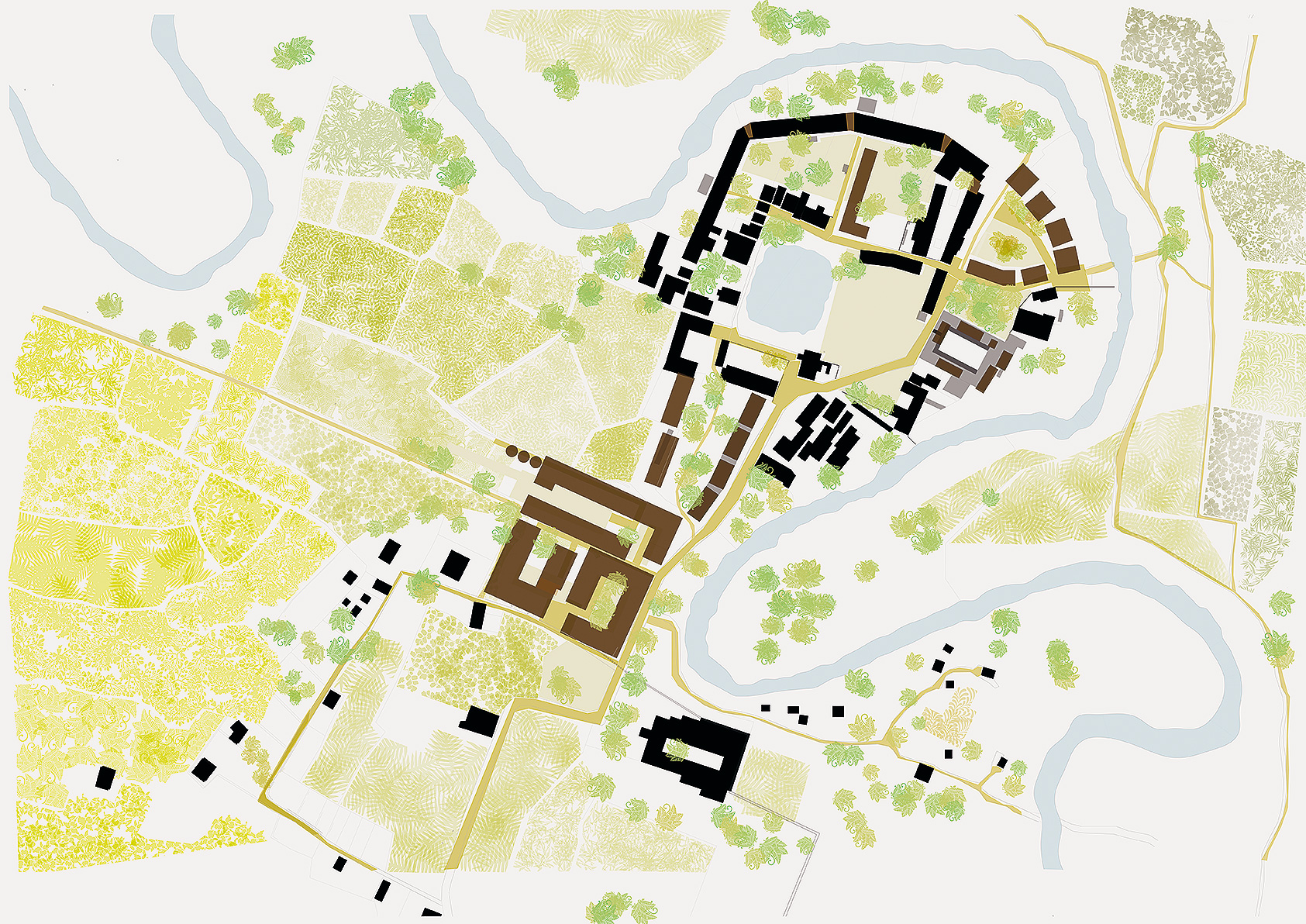
During the 2012 summer semester, as part of the cooperation between BASEhabitat/the University of Art and Design Linz and the NGO Little Flower/ Austria, a master plan was created for a small village in the Indian state of Bihar. Based on this, plans for the new build and adaptation of several central buildings were also created. The main aims were to push the independent economic development of the village, to improve education, and to improve the precarious housing situation of the local inhabitants.
The new buildings for the building yard, the dairy farm and the weaving mill were clustered together at the entrance of the village into a small industrial area. They offer space for the economic development of the village and, together with the existing hospital, they form a buffer zone to the fast-growing neighbouring city. The flats for the villagers relate to the existing rows of buildings and allow for the existing flats to be made larger and for additional extensions to be added in a simple system that can be easily copied. The village can therefore continue this. The teachers’ flats along with the community hall are at the centre of the village and are intended to be attractive accommodation for good teachers from outside the village.
The step-by-step implementation of the master plan started in 2012 in cooperation with workers from the village. The teachers’ flats were chosen as the first project since the opportunity for improved education and training for the children and young people of the village is of key importance.
The first building was also supposed to push the use of sustainable building materials such as loam and bamboo. An actual tangible building built with their own hands would show the village the qualities of these materials and make it easy to understand.
Villagers find it difficult to find work outside of the village due to stigmatisation. Prospects are not bright for the healthy either. Old structures are increasingly relaxing and the younger generation are using their creativity and motivation to find new opportunities. Slowly but surely, new paths are opening up to get the village – which is currently supported exclusively by donations and foreign support – back on their own feet.
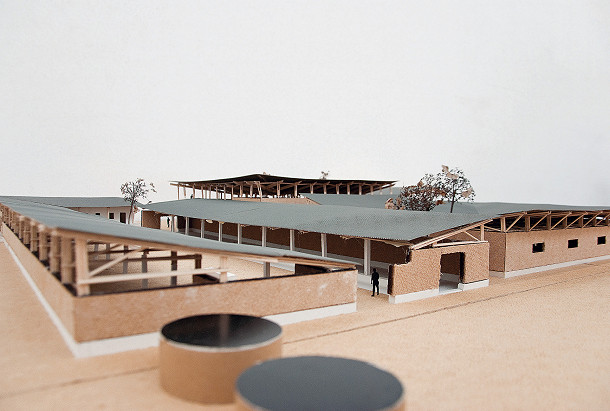
Photo: Iris Nöbauer, Jomo Zeil
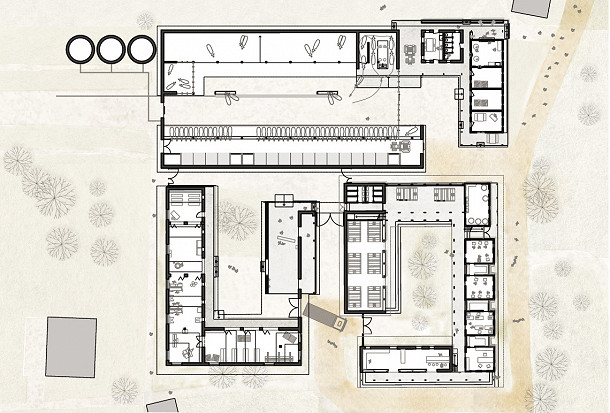
“We want to stand on our own feet, even if we have no feet.”
Brother Christadas, late director and founder of Little Flower
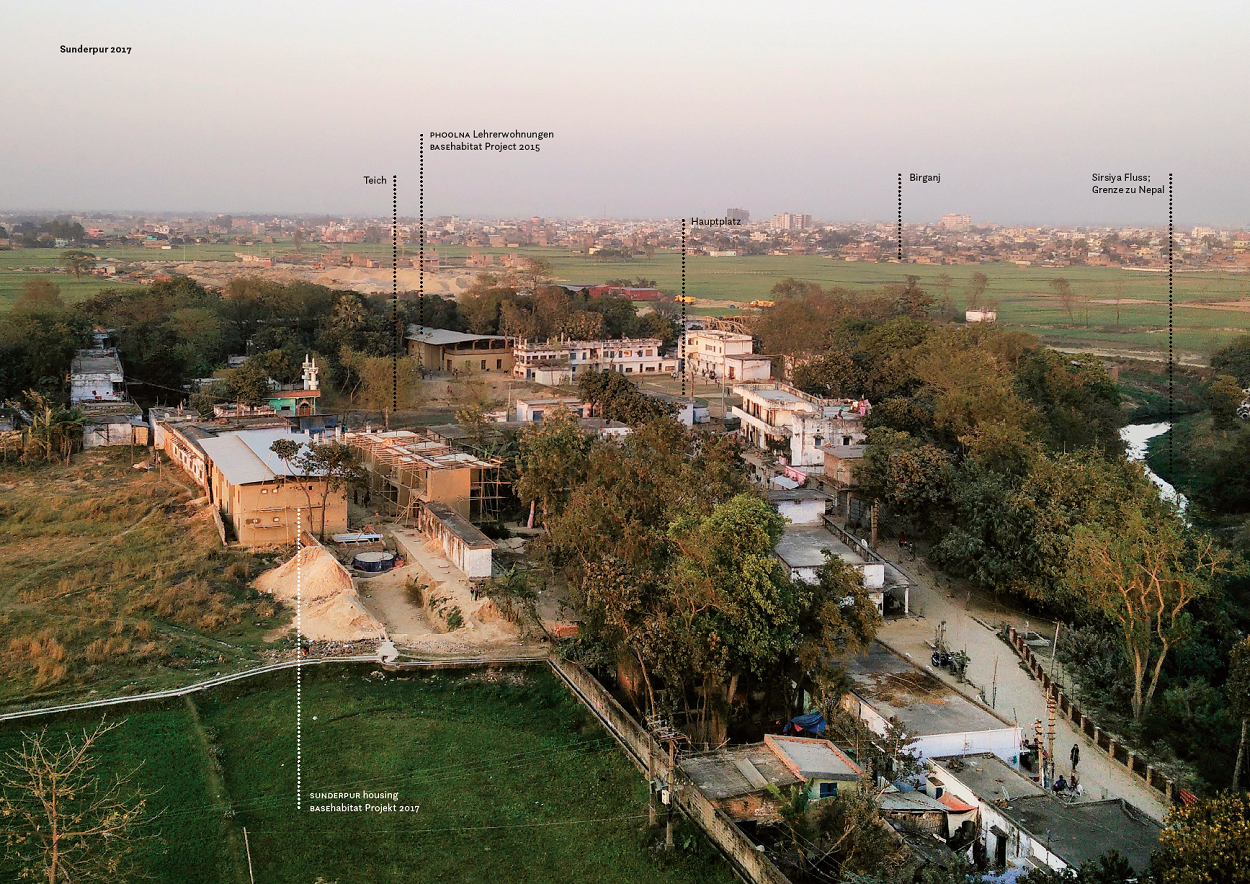
aerial photo of the village 2017
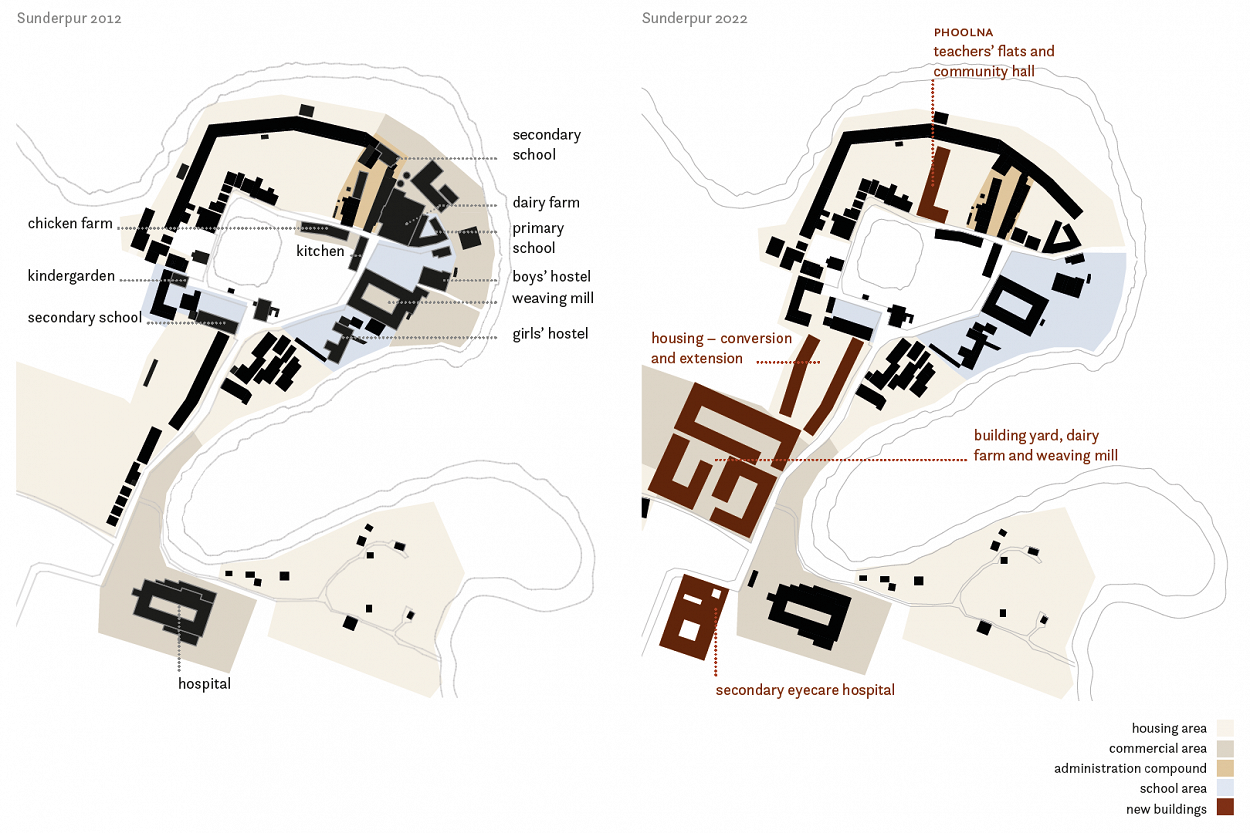
Design and Building Project
Felix Ganzer, Iris Nöbauer, Sebastian Vilanek, Jomo Zeil
Village Study
Marcus Brückner, Felix Ganzer, Corinna König, Iris Nöbauer, Sebastian Vilanek, Jomo Zeil
Consultation of the Design
Prof. Roland Gnaiger, Clemens Quirin, Michael Zinner
Client
Little Flower, Claudia Vilanek
Awards
Nominated for Terra Award 2016
Sponsors
Little Flower, Land OÖ